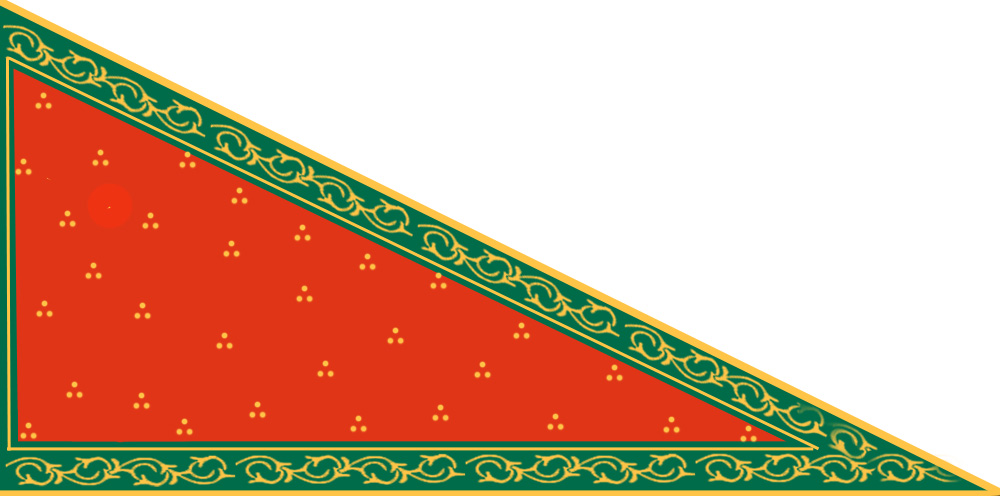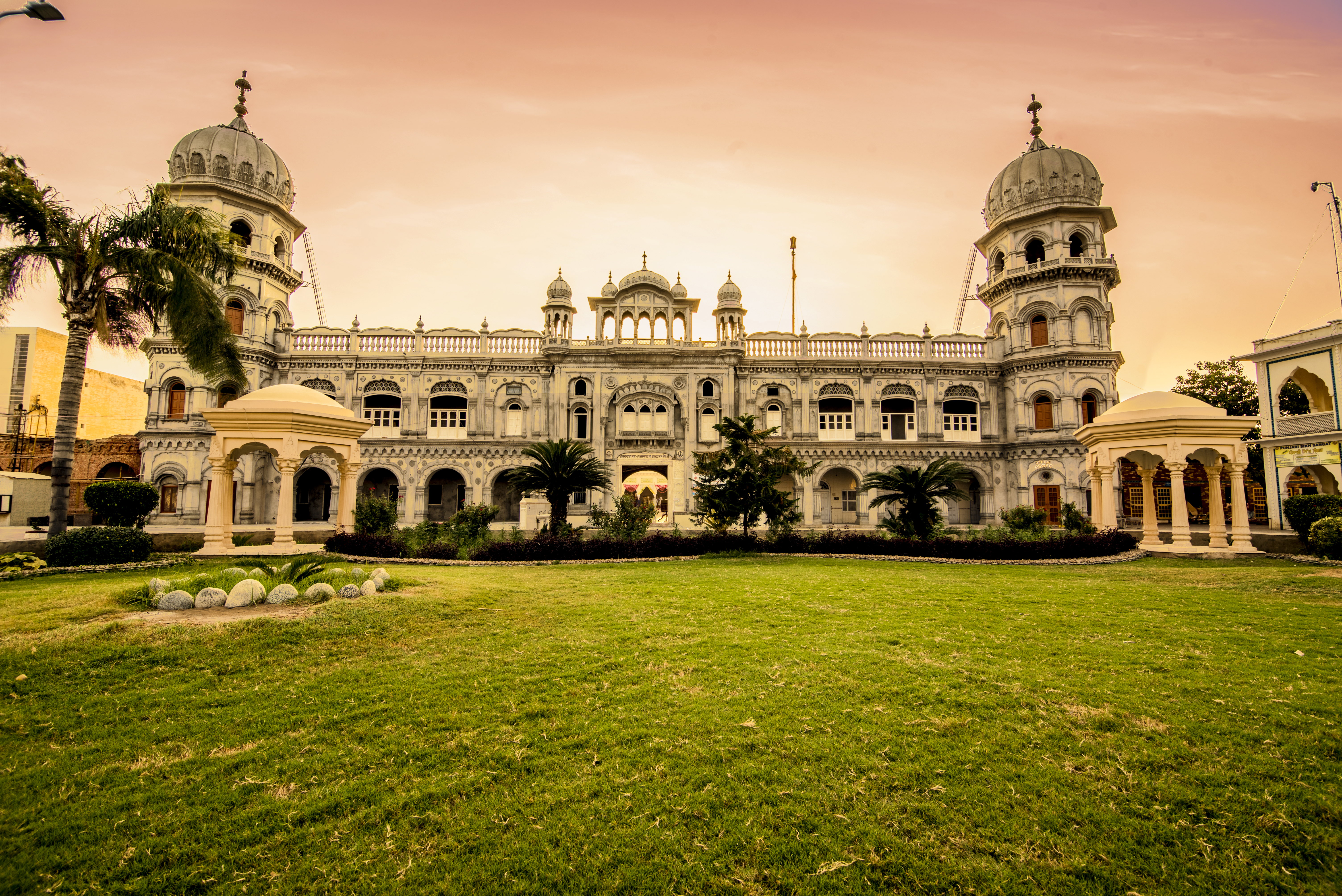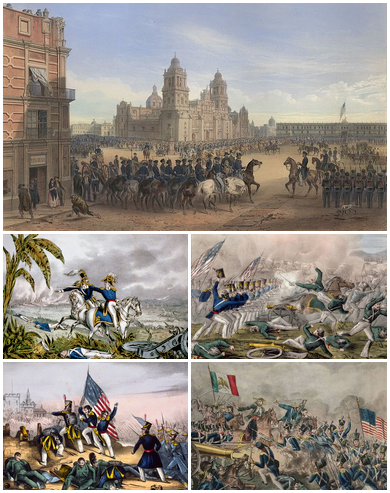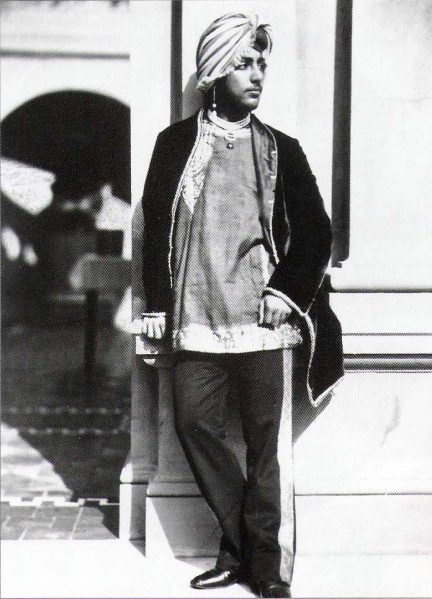|
Sham Singh Atariwala
Sham Singh Attariwala (1790 – 10 February 1846) was a general of the Sikh Empire. He was born in the 1790s in the town of Attari (a few kilometres from the border of Indian and Pakistan Punjab in India), Amritsar, in the Majha region of Panjab, India. As a child he was educated in Gurmukhi and Persian. When Ranjit singh became the Maharaja of Punjab, he got Attariwala's services at his disposal. Maharaja Ranjit Singh knowing his qualities and fighting abilities made him a 'Jathedar' of 5000 horsemen. He participated actively in many campaigns, notably like the campaign of Multan, campaign of Kashmir, campaign of the Frontier Province etc. Sham Singh Attariwala is also famous for his last stand at the Battle of Sobraon. He joined the Sikh military in 1817 and during the Afghan–Sikh Wars participated in the Battle of Attock, Battle of Multan, Battle of Peshawar, and the 1819 Kashmir expedition. His daughter Nanaki Kaur Attariwala, later Kunwarani Nanaki Kaur, was marrie ... [...More Info...] [...Related Items...] OR: [Wikipedia] [Google] [Baidu] |
Attari
Attari, also spelled Atari, is a village of Amritsar district in the Punjab state of India, 3 km from the Indo-Pakistani border at Wagah. It is situated 25 km west of the Sikh holy city of Amritsar, and is the last Indian station on the rail route connecting Lahore, Pakistan with the Indian capital Delhi. Attari village was the native village of Sardar Sham Singh Attariwala, one of the generals in the Army of Maharaja Ranjit Singh. History Attari village, in the Majha Region, was founded by two Sidhu Jat brothers, by the name of Gaur Singh and Kaur Singh around 1740. They were the sons of Chaudhri Kahn Chand Sidhu of village Kaonke in Ludhiana (Malwa). The two brothers immigrated to the Majha Region beyond the Sutlej River. Firstly the found another village, by the name of Kaunke (Amtitsar). Later a famous local ascetic named Mool Dass pointed the brothers towards a large mound ("theh" in Punjabi), and asked them to establish a new village. Gaura got built a attari ... [...More Info...] [...Related Items...] OR: [Wikipedia] [Google] [Baidu] |
Battle Of Sobraon
The Battle of Sobraon was fought on 10 February 1846, between the forces of the East India Company and the Sikh Khalsa Army, the army of the Sikh Empire of the Punjab. The Sikhs were completely defeated, making this the decisive battle of the First Anglo-Sikh War. Background The First Anglo-Sikh war began in late 1845, after a combination of increasing disorder in the Sikh empire following the death of Ranjit Singh in 1839 and provocations by the British East India Company led to the Sikh Khalsa Army invading British territory. The British had won the first two major battles of the war through a combination of luck, the steadfastness of British and Bengal units and deliberate treachery by Tej Singh and Lal Singh, the commanders of the Sikh Army. On the British side, the Governor General, Sir Henry Hardinge, had been dismayed by the head-on tactics of the Bengal Army's commander-in-chief, Sir Hugh Gough, and was seeking to have him removed from command. However, no commande ... [...More Info...] [...Related Items...] OR: [Wikipedia] [Google] [Baidu] |
Sikh Warriors
Sikhs ( or ; pa, ਸਿੱਖ, ' ) are people who adhere to Sikhism (Sikhi), a monotheistic religion that originated in the late 15th century in the Punjab region of the Indian subcontinent, based on the revelation of Guru Nanak. The term ''Sikh'' has its origin in the word ' (), meaning 'disciple' or 'student'. Male Sikhs generally have ''Singh'' ('lion'/'tiger') as their last name, though not all Singhs are necessarily Sikhs; likewise, female Sikhs have ''Kaur'' ('princess') as their last name. These unique last names were given by the Gurus to allow Sikhs to stand out and also as an act of defiance to India's caste system, which the Gurus were always against. Sikhs strongly believe in the idea of "Sarbat Da Bhala" - "Welfare of all" and are often seen on the frontline to provide humanitarian aid across the world. Sikhs who have undergone the ''Amrit Sanchar'' ('baptism by Khanda'), an initiation ceremony, are from the day of their initiation known as Khalsa, and they mus ... [...More Info...] [...Related Items...] OR: [Wikipedia] [Google] [Baidu] |
1846 Deaths
Events January–March * January 5 – The United States House of Representatives votes to stop sharing the Oregon Country with the United Kingdom. * January 13 – The Milan–Venice railway's bridge, over the Venetian Lagoon between Mestre and Venice in Italy, opens, the world's longest since 1151. * February 4 – Many Mormons begin their migration west from Nauvoo, Illinois, to the Great Salt Lake, led by Brigham Young. * February 10 – First Anglo-Sikh War: Battle of Sobraon – British forces defeat the Sikhs. * February 18 – The Galician slaughter, a peasant revolt, begins. * February 19 – United States president James K. Polk's annexation of the Republic of Texas is finalized by Texas president Anson Jones in a formal ceremony of transfer of sovereignty. The newly formed Texas state government is officially installed in Austin. * February 20– 29 – Kraków uprising: Galician slaughter – Polish nationalists stage an uprising in the Free C ... [...More Info...] [...Related Items...] OR: [Wikipedia] [Google] [Baidu] |
Routledge
Routledge () is a British multinational publisher. It was founded in 1836 by George Routledge, and specialises in providing academic books, journals and online resources in the fields of the humanities, behavioural science, education, law, and social science. The company publishes approximately 1,800 journals and 5,000 new books each year and their backlist encompasses over 70,000 titles. Routledge is claimed to be the largest global academic publisher within humanities and social sciences. In 1998, Routledge became a subdivision and imprint of its former rival, Taylor & Francis Group (T&F), as a result of a £90-million acquisition deal from Cinven, a venture capital group which had purchased it two years previously for £25 million. Following the merger of Informa and T&F in 2004, Routledge became a publishing unit and major imprint within the Informa "academic publishing" division. Routledge is headquartered in the main T&F office in Milton Park, Abingdon, Oxfordshir ... [...More Info...] [...Related Items...] OR: [Wikipedia] [Google] [Baidu] |
Duleep Singh
Maharaja Sir Duleep Singh, GCSI (4 September 1838 – 22 October 1893), or Sir Dalip Singh, and later in life nicknamed the "Black Prince of Perthshire", was the last ''Maharaja'' of the Sikh Empire. He was Maharaja Ranjit Singh's youngest son, the only child of Maharani Jind Kaur. He was placed in power in September 1843, at the age of five, with his mother ruling on his behalf, and after their defeat in the Anglo-Sikh War, under a British Resident. He was subsequently deposed by the British Crown, and thereafter exiled to Britain at age 15 where he was befriended by Queen Victoria, who is reported to have written of the Punjabi Maharaja: "Those eyes and those teeth are too beautiful".Eton, the Raj and modern India By Alastair Lawson; 9 March 2005; BBC News. The Queen was godmother to several of his children.< ... [...More Info...] [...Related Items...] OR: [Wikipedia] [Google] [Baidu] |
Council Of Regency
A regent (from Latin : ruling, governing) is a person appointed to govern a state ''pro tempore'' (Latin: 'for the time being') because the monarch is a minor, absent, incapacitated or unable to discharge the powers and duties of the monarchy, or the throne is vacant and the new monarch has not yet been determined. One variation is in the Monarchy of Liechtenstein, where a competent monarch may choose to assign regency to their of-age heir, handing over the majority of their responsibilities to prepare the heir for future succession. The rule of a regent or regents is called a regency. A regent or regency council may be formed ''ad hoc'' or in accordance with a constitutional rule. ''Regent'' is sometimes a formal title granted to a monarch's most trusted advisor or personal assistant. If the regent is holding their position due to their position in the line of succession, the compound term ''prince regent'' is often used; if the regent of a minor is their mother, she would be r ... [...More Info...] [...Related Items...] OR: [Wikipedia] [Google] [Baidu] |
Maharaja Ranjit Singh's Throne
Maharaja Ranjit Singh's throne was made by the goldsmith Hafez Muhammad Multani about 1820 to 1830, for the eponymous ruler of the Sikh empire. It is made of a wood and resin core, covered with sheets of repoussé, chased and engraved gold. ''''. Overview It shows the splendour of Ranjit Singh's court and is decorated with richly worked sheets of gold. The distinctive cusped base of this throne is composed of two tiers of lotus petals. The lotus is a symbol of purity and creation and a ha ...[...More Info...] [...Related Items...] OR: [Wikipedia] [Google] [Baidu] |
Prince Nau Nihal Singh
Kunwar Nau Nihal Singh (9 March 1821 – 5 November 1840) was the third Maharaja of the Sikh Empire. He was the only son of Maharaja Kharak Singh and his consort, Maharani Chand Kaur. He was known as Yuvraj Kunwar Nau Nihal Singh. He was also known as Bhanwar Singh or Bhanwar Sa or Kunwar Sa means Respected Young Prince. ''Bhawar'' means Son of Kunwar or Son of Thakur. His reign began with the dethronement of his father Maharaja Kharak Singh and ended with his death at the age of 19 on the day of his father's funeral. Early life Nau Nihal Singh was born on February 11, 1821 to Yuvraj Kharak Singh and his first wife, Chand Kaur. He was the grandson of Sher-e-Punjab Maharaja Ranjit Singh and Maharani Datar Kaur of the Nakai Misl, he grow up very close to his grandparents. His father was the heir of his grandfather- thus making him second in line of succession to the throne of Punjab. In April 1837 at the age of sixteen he was married to Bibi Nanaki Kaur Atariwala, daug ... [...More Info...] [...Related Items...] OR: [Wikipedia] [Google] [Baidu] |
1819 Kashmir Expedition
The Battle of Shopian took place on 3 July 1819 between an expeditionary force from the Sikh Empire and Jabbar Khan, the governor of the Kashmir Valley province of the Durrani Empire. It was the decisive battle during the Sikh expedition into Kashmir in 1819. Background From 1814 to 1819, the Sikh Empire was forced to send successive punitive expeditions against the hill states of Bhimber, Rajauri, Poonch, Nurpur, and others. By subduing rebellions in these states, the Sikh Empire was attempting to keep control of the routes through the Pir Panjal range and into Kashmir. However the Durrani Empire kept de facto control of the areas because the Pir Panjal Range blocked supplies and fresh troops to the Sikh armies. By 1819, Azim Khan had taken a force of troops to Kabul. Birbal Dhar, Azim Khan's revenue minister, traveled to Lahore, the capital of the Sikh Empire, and asked Maharaja Ranjit Singh to annex Kashmir from the Durrani Empire. He informed Ranjit Singh that Azim Khan w ... [...More Info...] [...Related Items...] OR: [Wikipedia] [Google] [Baidu] |
Battle Of Peshawar (1834)
The Battle of Peshawar took place on May 6, 1834, between the Sikh Empire and the Peshawar Sardars, who was ruled by Sultan Mohammad Khan after being deposed by his brother, Dost Mohammad Khan, from his rule in Kabul. Following the collapse of the Durrani Empire, Afghanistan split into many different states to where virtually every city was autonomous or independent in some shape or form, with states like the Principality of Qandahar and the Emirate of Herat being formed. Maharaj Ranjit Singh sent General Hari Singh Nalwa and Mahan Singh Mirpuri as Nalwa's deputy commander to capture Peshawar. After brief fighting, Hari Singh Nalwa captured the city. The news of the capture of Peshawar quickly reached Kabul. Learning of his deposed brothers defeat. Hari Singh Nalwa was appointed as governor of the city by Maharaja Ranjit Singh. References Peshawar 1834 1834 in India 1834 Events January–March * January – The Wilmington and Raleigh Railroad is chartered i ... [...More Info...] [...Related Items...] OR: [Wikipedia] [Google] [Baidu] |
Battle Of Multan
The siege of Multan began in March 1818 and lasted until 2 June 1818 as part of the Afghan–Sikh Wars, and saw the Sikh Empire capture the city of Multan (in modern-day Pakistan) from the Durrani Empire. Background After he was defeated at the Battle of Attock, the Durrani Vizier, Wazir Fateh Khan, fought off an attempt by Ali Shah, the ruler of Persia, to capture the Durrani province of Herat. He was joined by his brother, Dost Mohammad Khan. Once they had captured the city, Fateh Khan attempted to remove the ruler, a relation of his superior, Mahmud Shah, and rule in his stead. In the attempt to take the city from its Durrani ruler, Dost Mohammad Khan's men robbed a princess of her jewels. Kamran Durrani, Mahmud Shah's son, used this as a pretext to remove Fateh Khan from power, and had him horribly tortured and executed. While in power, however, Fateh Khan had installed twenty-one of his brothers in positions of power throughout the Durrani Empire. After his de ... [...More Info...] [...Related Items...] OR: [Wikipedia] [Google] [Baidu] |







